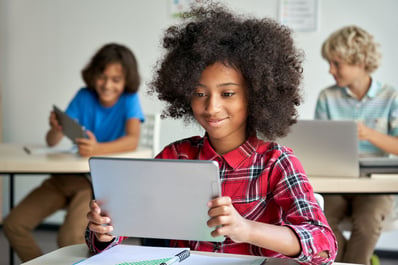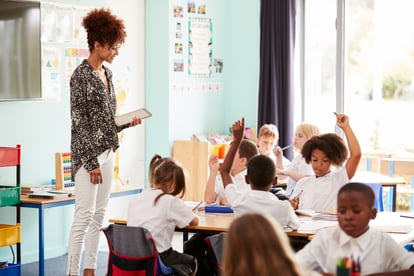Developing Students’ Self-Awareness Skills
What is self-awareness?
According to the Collaborative for Academic, Social, and Emotional Learning (CASEL): The abilities to understand one’s own emotions, thoughts, and values and how they influence behavior across contexts. This includes capacities to recognize one’s strengths and limitations with a well-grounded sense of confidence and purpose.

People with strong self-awareness skills can:
- Recognize their strengths and challenges
- Understand and talk about their needs and feelings
- Recognize other people’s needs and feelings
- See how their behavior affects others
- Develop a growth mindset and learn from their mistakes
What are the demands for SEL and Self-Awareness?
McKinsey & Company conducted research that identified foundational skills that will help citizens thrive in the future of work. This research involved 18,000 companies in 15 different countries. The majority of those skills are aligned to the skills we talk about with SEL. Self awareness: Understanding own emotions and triggers, self-confidence, coping with uncertainty, understanding own strengths– just to name a few.
How can we help students build self-awareness in the classroom?
Modeling
- Acknowledge your own emotions and how they may play into your reactions.
- Explicitly name the skills you’re using (or “think aloud”) as you model them
Well-Being Check-Ins
Starting a lesson with a check-in is a great way to help students practice self-awareness. Let students know why you are doing check-ins. Tell them that it helps build their skills in understanding how they are feeling at the moment and then if they need to, find ways that work for them to address that feeling so they can focus on the present. It is a skill to become aware of how we are feeling.

One favorite I’ve been sharing recently is the Feelings Wheel. Check out this link to learn more about using the Feelings Wheel.
Do you have a Peace Corner, sometimes referred to as a Calm Corner or Calm Space, in your classroom? If not, can you identify an area to create a space for students to go to when they need to calm down?
Identifying and Naming Emotions
If we can see the emotion, then we don’t have to be it.
Research has shown that mere verbal labeling of negative emotions can help people recover control.
The Feelings Wheel or another method that allows students to identify emotions also helps students to dive deeper into why they are feeling the way they do.
The act of naming or labeling your feelings allows you to think more clearly and gives you a sense of control over those feelings.
Reflections
Make time during the day for student reflection. Journaling daily can be an easy way for students to reflect. You might include prompts such as:
 What did I do well today?
What did I do well today?- What challenges did I face?
- What was I feeling?
- How did I respond? Could I have responded differently?
- What strengths did I use to keep me focused on the best version of myself?
- What is my intention for tomorrow?
Help students build confidence and purpose by allowing them to Identify their areas Strengths and Areas of Growth
Use the template below to allow students to reflect on their progress in the class, on a project or on an assignment. Students can begin to identify their strengths and areas of growth. Doing this will allow the teacher and the student to highlight areas of strength.
Ask students to reflect on what they do well, what they sometimes need help with, Student-led conferencing LINC Student Conference Report Template. Include activities that students complete to reflect on their strengths.